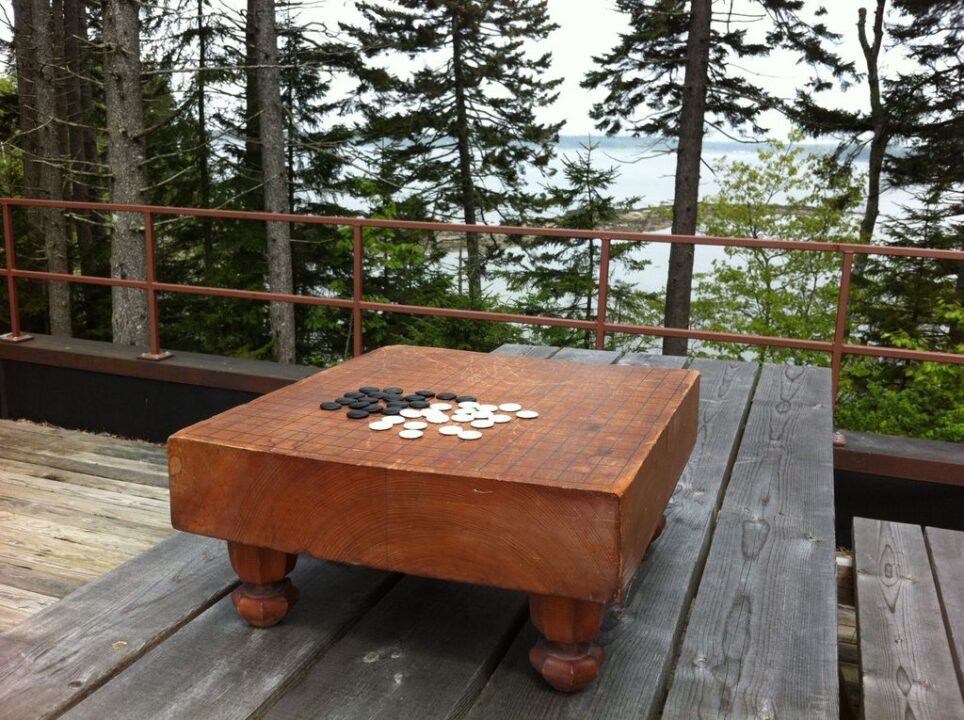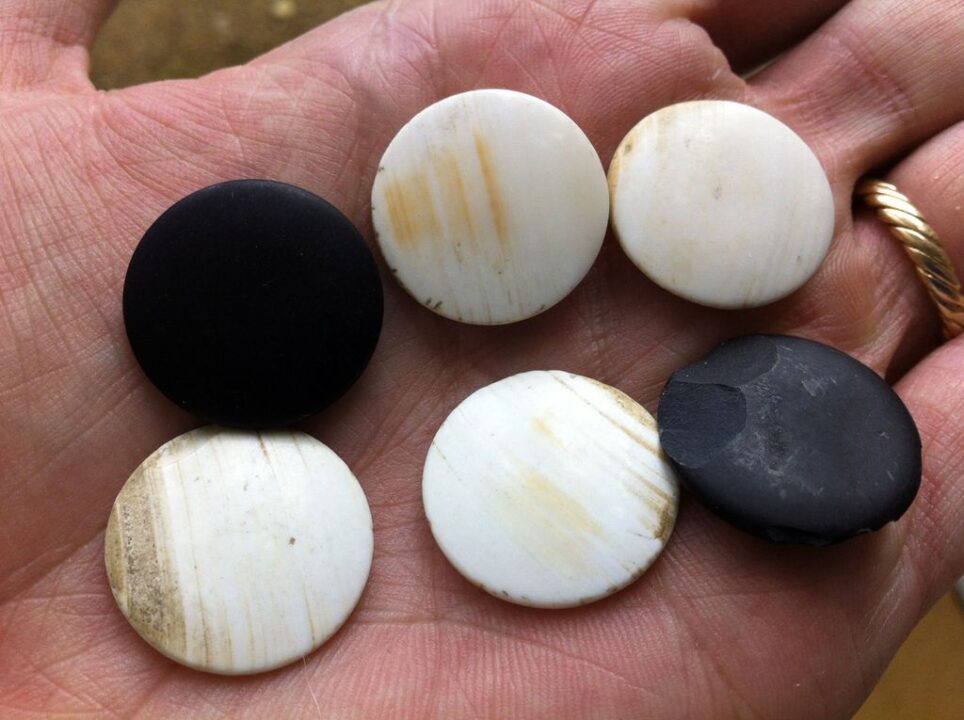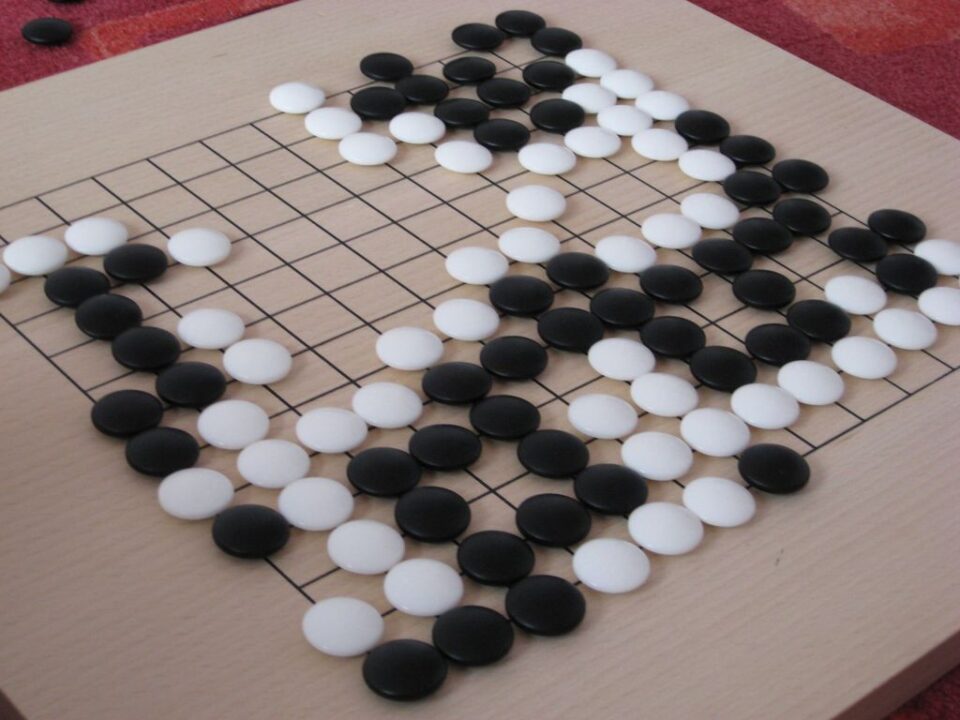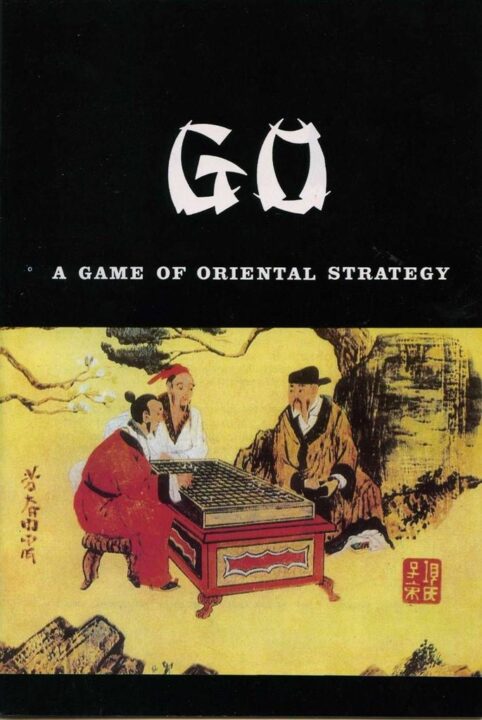This is a review of one of the oldest board games around. If you think Monopoly causes family drama, wait until you see how a game of Go can turn your friends into silent, thinking machines. I’ve played it many times, and let me tell you, it’s not just moving black and white stones. It’s a brain-bending battle of wits. In this review, I’ll share how it plays, how much skill actually matters, and why it’s got a reputation for melting minds. Ready? Let’s get started—no PhD needed, promise.
How It Plays
Setting up
Grab your board (usually 19×19, but smaller ones work too) and a pile of black and white stones. One player takes black, one takes white. Black goes first. Sit across from each other and try not to look too smug yet.
Gameplay
Players take turns placing one stone each on the empty intersections. Once a stone is down, it stays put—like me after a big lunch. The goal is to surround empty spaces and your opponent’s stones. If a group of stones is completely surrounded, you capture and remove them. No dice, no cards, just brainpower and staring contests.
Winning the game
When both players pass (because there are no smart moves left), count up the empty spaces you’ve surrounded, plus any captured stones. Whoever controls the most territory wins. If you win, don’t gloat—much.
Want to know more? Read our extensive strategy guide for Go.
Endless Strategy: The Surprising Depth of Go
Let me tell you about the time I thought I’d cracked Go. I had a plan, a fool-proof strategy, or so I thought. Ten minutes later, my friend had surrounded my stones like a wolfpack on a sheep and I was staring at the board in disbelief. No game has ever made me feel so smart, so hopeless, and so curious—all in the same hour.
Go looks simple. You start with a blank board and only two kinds of pieces: black and white stones. The rules take five minutes to learn. Place a stone, try not to get surrounded, capture territory. But if you think you’ve seen it all in your first game, wait until you’ve played a dozen. Or a hundred. Go is the board game equivalent of an onion. Every layer you peel away reveals another you never knew existed. The possible board positions are so high, not even computers had a hope until recently. Every move can reshape the whole board, and a tiny mistake on turn 7 might doom you by turn 36. It’s ruthless, but I mean that in the best way.
Every match gives you that wild feeling of having endless paths ahead. I love chess, but Go makes it look like checkers sometimes. Shapes, tactics, life and death, whole-board thinking—if you like games where you see your skills grow game after game, Go is pure gold. There’s never one right answer, so you can get creative, sneaky, or just plain weird with your approach. There are more strategies than flavors at your favorite ice cream shop. And, unlike luck-based games, if you lose, it’s because your opponent just outplayed you. Ouch. But also, yes!
All this head-scratching depth leads to a wild ride of player interaction and skill impact—so hang on, because we’re about to get personal in the next section!

Player Interaction and Skill Impact in Go
One of the wildest things about playing Go is how much you actually interact with your opponent. You’re not just playing on your own little island (unless you really mess up with your territory). Every move shouts out, “Hey, I see what you’re doing, and I don’t like it.” The tension gets real fast. Placing a single stone can send your friend into a frenzied five-minute silence, followed by suspicious eye squinting and, if you’re lucky, some dramatic sighing. I once played with my buddy Tom and the table suddenly felt like a silent movie drifting toward a dramatic ending—except with more chips and less piano.
What’s wild is that Go doesn’t let you coast on luck. This isn’t Monopoly, where Aunt Linda can crush you with a couple of good dice rolls while you weep softly on Boardwalk. Nope. In Go, pure skill rules. The better player has the edge almost every time. It’s a harsh truth, but if you lose, you can’t blame the game or the weather. You just have to accept that your opponent out-thought you, or maybe just snuck in a brilliant move while you were distracted by snacks.
Despite this, playing Go feels fair. Both sides start evenly matched. If you get stomped, you know there’s a lesson to learn. Even after dozens of games, my group still finds new ways to mess up and win. If you love seeing your choices matter and hate rolling dice, Go is pure bliss.
Curious about whether Go is friendly for newcomers or if you’ll need to become a hermit to learn it? Stick around—next up is the thrilling world of learning curve and accessibility!

Learning Curve and Accessibility in Go
So, you’ve decided to tackle Go. Good news: learning the rules of Go is easier than making toast. The board starts empty, you plop your stones down to make territory, and whoever grabs the most wins. That’s the basic idea. You could teach your grandma the rules in about five minutes—and my grandma is a notorious napper.
BUT (and this is a big but), don’t be fooled. Once you step foot on that board, Go starts showing its true colors. The learning curve is sneakier than a ninja hamster. At first, you’ll think you’re just placing stones, but suddenly you’re trying to spot ladders, eyes, and something called “ko” that sounds like a martial art. You lose quickly, then slower, then you start seeing glimmers of hope, then you’re amazed at how your hopeful glimmer gets crushed by a move you didn’t see coming. It’s brutal, but also kind of beautiful.
If you’re a casual player or new to board games, Go might feel intimidating after a few rounds. There’s a reason professionals have grey hair, and it’s not just from staring at black and white stones. However, Go is great in that you can keep things as simple or as advanced as you want. Smaller boards (like 9×9 or 13×13) are fantastic for learning and don’t take as long as the full-sized 19×19 beast. And let’s not forget—Go has a thriving online community, so you’ll never lack for friendly (or not-so-friendly) advice, strategy wizards, or folks to play with.
If you’re ready to explore the physical side of Go, get your eyes (and fingers) ready—because next up, we’re talking about component quality and how those stones feel in your hand!

Component Quality and Board Aesthetics in Go: Simple Yet Timeless
There’s a funny thing about go — you can play it with pebbles and scrap cardboard, or you can play on a board so beautiful you’d be scared to breathe on it. The core kit is simple: you need a go board (or “goban,” if you want to sound fancy at parties) and two sets of stones, one black and one white. That’s it. But let me tell you, the experience changes a lot depending on the components.
Cheap sets use plastic stones and folding boards. I once had a travel set that creaked so much, my dog thought it was a squeaky toy. The stones were so light, a sneeze could alter the entire game. If you get a mid-range set, you get that satisfying “clack” when the stones hit the board. It’s hard to describe, but it’s a little symphony for your ears and just feels right.
High-end sets are a work of art. I once spilled coffee on a friend’s kaya wood go board, and I think I saw his soul leave his body. These boards are thick, heavy, and the grid lines are often hand-lacquered. Glass or slate and shell stones are cold, weighty, and feel great to hold. Setting up a game, you almost feel like an ancient master, even if you still lose in under ten minutes.
Visually, go is a beauty. The stark black and white stones on a simple golden board look classy in any living room. I definitely recommend go, even with a basic set. But if you fall in love with the game, treat yourself to a nice board. Your senses (and probably your pride) will thank you!

Conclusion
And there you have it — my review of Go! After plenty of brain-melting games with my pals, I can say Go is pure strategy goodness. It’s deep, fair, and punishes sloppy moves quicker than a cat spots a snack. Sure, learning all the tricks will make your head spin faster than a spinning top, but the payoff is huge. It’s got just enough accessible tricks for beginners, and feels fancier with a quality set (though a pizza box and buttons worked fine for us in a pinch). Luck? Nope, not here. If you lose, it’s on you — just ask my friend Mike, who is still blaming the table for his last blunder. Is it for you? If you enjoy learning by doing and have the patience of a saint (or at least a bored cat), Go is a must-have classic. That’s it from me for this review – now go play Go and try not to get surrounded… like I did. Every. Single. Time.

